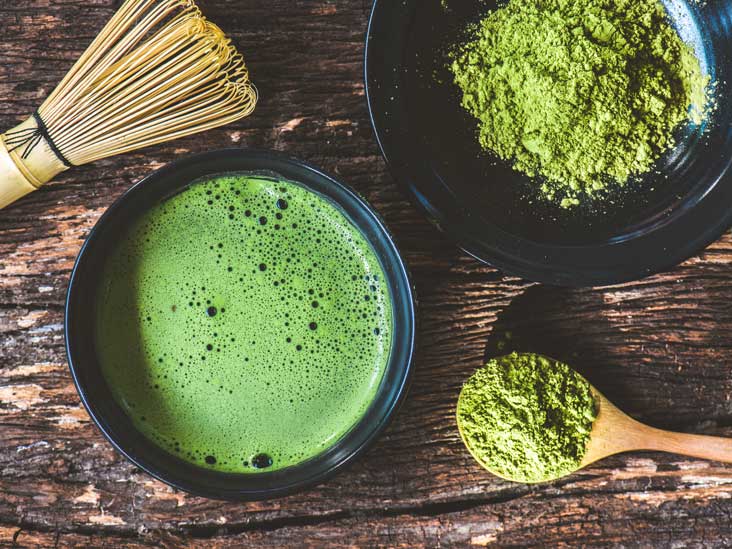Green tea is one form of tea from the Camellia sinensis plant. This is the same plant used for other types of tea, such as black tea. For green tea production, tea leaves are harvested and are quickly heated. Then the leaves are processed.
Matcha is a type of green tea. The tea plant is grown in shade during the last few weeks of harvesting. This protects it from sunlight and slows down growth to give the tea leaves their distinct characteristics. Matcha has a vibrant green color.
Differences
Matcha and green tea come from the same plant as other teas. The main differences are in their production processes and the content of the end product.
Matcha goes through a more careful growth and extraction process than other teas. Manufacturers do not grow most green teas in the shade or protect them from oxidation. These added steps help control variables in production and give matcha its unique characteristics and flavor.
Green tea may have a light, refreshing flavor, matcha tends to be rich, with a stronger, grassy flavor.
Green tea contains about 11- 25 mg/grams of caffeine. Matcha contains about 19–44 mg/grams of caffeine.
Both green teas differ in their prices or cost too. The added processing and special care of matcha may make it more expensive than green tea.
Green tea health benefits
Relieves headache Aid weight loss Relief from digestive problems Increased mental alertness Sharpens memory
Matcha tea health benefits
Reduced photoaging Strengthens blood vessels in the heart Reduced oxidative stress Improved memory and cognitive function Positive effects on mental and physical effects
Both teas have similar health benefits. It's just that matcha tea contains a stronger concentration of some key nutrients and antioxidants.

 Matcha and green tea come from the same Camellia sinensis plant. The main differences are in their production processes and the content of the end product, matcha contains a bit more concentrated form.
Matcha and green tea come from the same Camellia sinensis plant. The main differences are in their production processes and the content of the end product, matcha contains a bit more concentrated form.




















.jpeg)



.jpg)




.jpg)





.jpeg)

.jpg)


